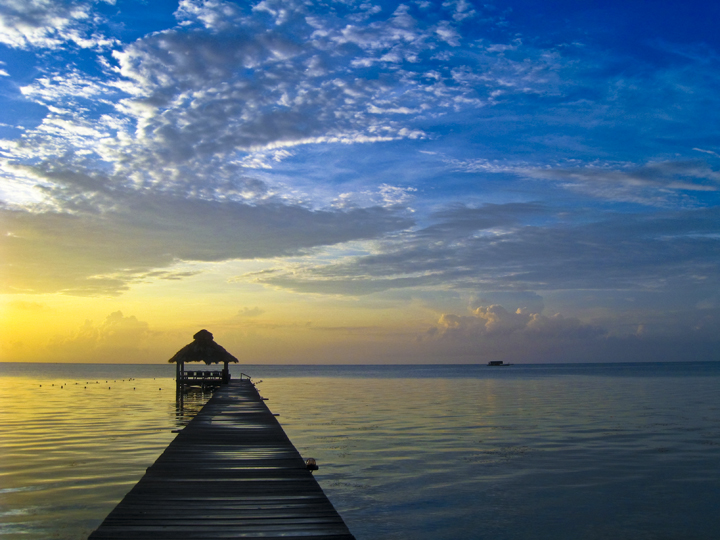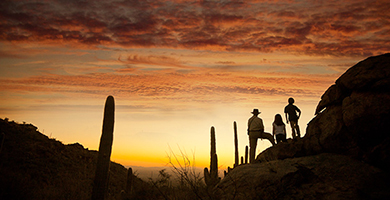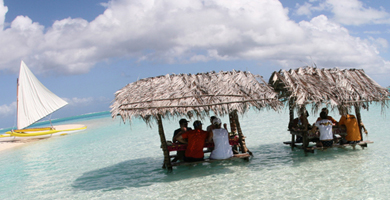Go Big: Inspired Adventures in ALASKA
Cynthia Kane explores Alaska’s vast, rugged terrain navigating rivers and epic trails in America’s Last Frontier
“Inspired by greatness” is a phrase I’ve come across all my life. A phrase that when I first heard it — I was inspired to find the source. Since then, I’ve traveled around the world and seen beautiful sites that have marked me, and I’ve hiked in locations where the views have enlightened me in the moment. But until my trip to Alaska, I had yet to have a place change my way of thinking; a place so wild and full of wonder that even as I’m writing this I feel its greatness. What makes Alaska so breathtakingly beautiful is the remote, rugged and vast wilderness; the magnificent mountains and glaciers, the jaw dropping abundance of wildlife and the sheer simplicity of it all. With all that being said, it’s probably one of the best places to play and wander in the outdoors.
Here is just a taste of what I experienced in Alaska, America’s Last Frontier.
Hope, Alaska
About a two-hour drive south from Anchorage, you’ll find yourself in the town of Hope. The small locale is quiet and picturesque with plenty of coffee shops and cozy restaurants, and superb views of Turnagain Arm. While the area around Hope offers great trails, fishing, and even horseback riding, what draws many to this quaint corner of the world is the rafting. Six Mile Creek is where most of the hardcore white-water runs, and I’m telling you, I’ve never run rapids like this before. The canyons are narrow and the river is fast and the water is high. Dry suits are a must, and before you head out for the day you have to go through a swim test. What is that you ask? It’s where you fall in with the current to then swim to an eddy. If you don’t feel strong enough after this point, or if the guides don’t think you’re up for the challenge they’ll let you sit this one out, without charging you. Seriously, this isn’t just a float down the river, but a high adrenaline, knock-your-socks-off, crazy run. A great place to eat in town after a long day on the river is the Seaview Cafe. As its name implies, the views astound.
Girdwood, Alaska
If hiking is on your agenda then Girdwood is a great stop. It’s an hour from Anchorage by car and there are so many trails to choose from that your feet may feel the burn. And if you’re not keen on going out alone, you can sign up for guided tours at the Alyeska Resort. The trails in this area are very well marked, easy to follow, and there’s short strolls, intense uphills that ascend 2,000 feet in only 2 miles, and even a multi-day trek that is popular with locals called the Crow Pass Trail.
For a half-day hike through lush rainforest, and also to say that you’ve walked a part of the 1,326-mile Iditarod National Historic Trail, opt for the Winner Creek Trail. It starts as an easy stroll along a boardwalk behind the Alyeska Resort. From the beginning, you move through dense forest, and it’s hard to miss the old avalanche paths. The highlight of the hike arrives when you reach the Winner Creek Gorge. Standing on the footbridge, looking down at the rushing water, there’s no escaping the thrill of the wild here. Continue farther and you’ll reach Glacier Creek. When we were there the hand-operated tram was broken, but if it’s up, that’s how you’d get across, one hand at a time. As for wildlife, we saw black bears eating blueberries, and a lot of moose tracks.
Here you can find a map of all the trails that start near the resort. For other hikes in the area I recommend you head to the visitors center when you first get to town. Also, nearby Portage Valley, a 14-mile isthmus that connects the Kenai Peninsula to mainland Alaska, hosts myriad trails with views of glaciers and places to see spawning salmon. After a long hike it’s a good idea to eat well, and that you will at Jack Sprat. The restaurant is pretty popular so it’s best to call in advance or know that you may be waiting a while if you don’t. The food is fresh, local, organic and, yep, seasonal. Just take a look at the menu and you’ll be tempted to take all your meals there.
Where to stay: Alyeska Hostel
Denali National Park, Alaska
Six million acres of undisturbed wilderness, staggering views of the tallest mountain in North America, Mt. McKinley (note: only 30% of those visiting get to see it), and one 92-mile long road that is the only way in and out of the park is what greets you on arrival. Larger than the state of Massachusetts, Denali National Park is home to 350 grizzly bears weighing up to 600 lbs., 2,000 caribou, 60-100 adult wolves, 2,000 moose, and about 2,500 dall sheep. No matter if you’re on the ground hiking or on the bus, you’re likely to run in to some wildlife.
First things first — it’s important to make reservations for camping and the bus. You can do this online, or when you get to the park at the Wilderness Access Center. Without tickets, you won’t be able to get on a bus that takes you into the park and without having a spot reserved for camping, well, you won’t have a place to lay your head. The Wilderness Access Center is where you book bus trips, pay entrance fees, and reserve campground spots. The fee depends on how far into the park you’re going. This is also where the buses depart to take you into the park. If you are here for the hiking you pretty much can hop off the bus wherever you want to and forge your own path. There are no trails, just land, braided rivers, and mountains. Because there are no paths your best bet is to take an early green bus and ride it out to the Eielson Visitor Center, which is about 4 hours away. Along the way, take note of places you think you’d like to hop off and start your adventure. Then on the way back, you can jump off the bus and start exploring.
A lot of people hike around Stony Hill and Polychrome Pass, but you can literally go anywhere you’d like. We hopped off around Stony Dome and then moved to Polychrome Pass. The Stony Dome area once up the ridge was wide open. We walked up one mountain that then lead to another and on we went until we followed the riverbed back to the road. When hiking around Polychrome Pass there was definitely more bushwhacking involved, and though we had walked on spongy waterlogged tundra before, this area was like layers and layers of topsoil covering moss, ferns, and fungi. All that you have to remember is to make a lot of noise so the wildlife knows you’re there, and to be able to get back to the road for a bus to pick you up. As long as you can get yourself to a ridge and know where the road is you should be okay. If going off on your own and not seeing anyone else – except for wild animals of course — for a couple hours doesn’t appeal to you, there are guided hikes and walks offered by both the Denali Visitor Center and the Eielson Visitor Center.
For the scheduled Eielson hikes you’ll need to plan your bus schedule so that you arrive in time at the visitor center. For the Eielson Stroll, you need to be at the center before 1 p.m., while the more difficult trek, Eielson Alpine Hike, begins at 12 p.m. and has an 11-person maximum. The ranger-led Discovery hikes, limited to 11 people, leave from the Wilderness Access Center every day at 8 a.m. On these hikes you’ll learn basic skills you’ll need in the park, such as how to safely cross streams and basic orienteering. Near the park entrance, you’ll find 12 easy-to-navigate trails with the Horseshoe Lake Hike as a standout. It’s a shaded three-mile line hike that feels more like a relaxing stroll than a strenuous climb. It ends at the lake and if it’s not a time when the mosquitoes come out to play, then it’s a wonderful spot to soak in the view. After a long day in the park, take your hearty appetite to 229 Parks for a relaxing meal of local and organic dishes.
Where to stay: Denali River Cabins
Ketchikan, Alaska Adventure
Getting to the southeastern most city in Alaska can be a challenge. Ketchikan is roadless to the outside world, so arrivals are by air or sea only. But once you’ve reached the canned salmon capital of world, a wealth of outdoor adventures await, making it worth the extra effort. Lush and green, the average rainfall is 162 inches a year, which means catching a full dry day is near impossible. Luckily, it happened for us, which meant great panoramic hiking views and multiple sightings of bald eagles. There are a lot of trails in the area, because as most of Ketchikan is straight-up empty, beautiful, and untouched land, you’ll find plenty of day hikes here, with one of the best being the Deer Mountain Trail. To reach the trailhead, pick up the free shuttle by the visitor center and take it to the Totem Heritage Center. Walk the gravel road behind the museum. When it ends, turn right through someone’s driveway. At the paved road, turn left, and then follow the road right, passing the trash collection site. Keep straight and you’ll reach the trailhead. It’s a short three-mile hike that can be combined into a longer trek; however, once you get to the summit you may opt to go back down.
The reason? In the three miles you will have climbed about 3,000 feet to reach the foot of the mountain. While going up, it feels like you’re in a rainforest, because you are, and it’s shaded by trees. The dirt and rock path is surrounded by moss. You’ll cross footbridges, do tons of switchbacks and, about a mile or so in, reach a view of the harbor. Here you’ll see the cruise ships, ferries and float-planes, plus get a perspective on how little of this land is inhabited and the town’s small size. Set to the soundtrack of ravens and bald eagles, it’s simply amazing. As you continue up, the trail starts to narrow and the steep inclines will have you feeling for your Camelback. When you’ve reached the clearing, it’s only a bit farther to the stunning views. Standing on the edge of the mountain the landscape makes you feel like you’re a part of it all and when you reach the top — it’s a soul-stirring experience to say the least.
We found that no matter where you go in Alaska, you’ll be able to find what you’re looking for. Whether it’s a day out on the water, a hike, a mountain-top quest or just a quiet day sitting in town and watching the tide. The sheer scope of pristine nature is impossible to capture, but entirely possible to experience.
Cynthia Blair Kane loves to hike around the world and write about her experiences. She is the co-author of Take a Hike: The Best 50 Routes in the Community of Madrid (Ediciones la Librería, May 2011) and is currently planning her next adventure. More information about Cynthia at cynthiablairkane.com. Photos by Bryan Segraves.
Latest posts by Cynthia Kane
- Go Big: Inspired Adventures in ALASKA - August 13, 2014
- ARGENTINA: Go Take a Hike! - January 22, 2013
- SPAIN: Madrid Hikes A Peak Experience - May 2, 2012










